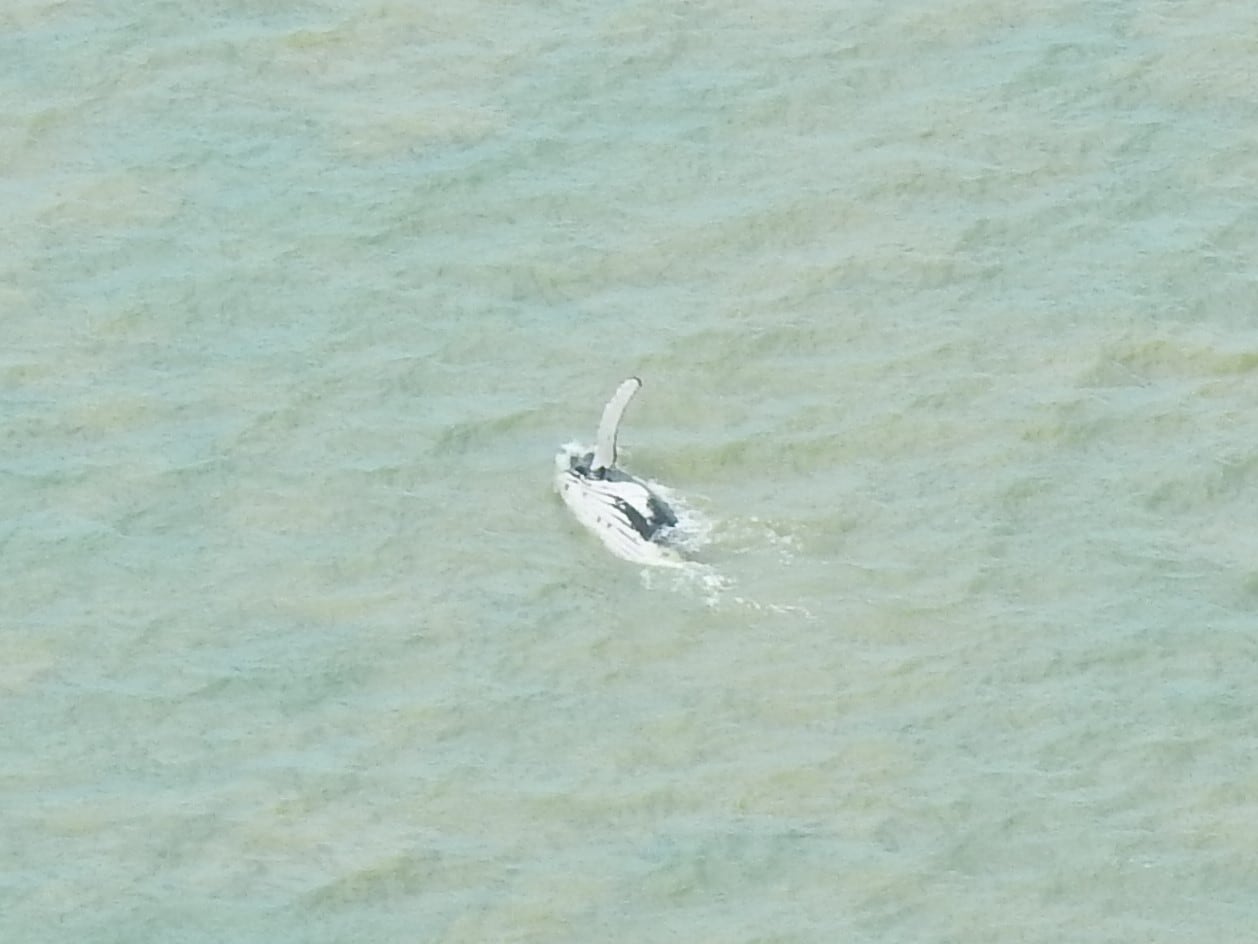Humpbacks ocean-bound after ‘unprecedented’ detour in Kakadu river

WHEN MARINE biologist Jason Fowler and a boatload of his scientist mates first saw a three-metre spout vapourising high above the water, a humpback whale was not their first guess at its identity. They were, after all, 20 kilometres inland on Kakadu National Park’s East Alligator River – a muddy river with six-metre tides and a depth ranging from two to fifteen metres.
After a furious debate between Fowler and his crew that was settled when the crew took photos of dorsal fins the next morning, the fishing expedition sailed for two days before regaining mobile phone coverage to finally report the sighting on 7 September.
Two action-packed weeks later, after multiple helicopter and boat surveys, as well as tens of phone calls and emails between scientists from four Australian states, the whales, now objects of international attention, have returned to sea of their own accord. The scientists assessing the situation – and anticipating a rescue mission unlike any other – have breathed a sigh of relief.

“It would have been the trickiest situation we’d ever worked in… people who’ve spent time up here know how tricky these tidal rivers are,” says Dr Carol Palmer, a senior scientist for Whales and Dolphins for the Northern Territory Government.
Unlike the clear, blue waters of humpbacks’ usual habitat far out to sea, the East Alligator is “quite shallow and very turbid – it’s very, very muddy”.
Jason Fowler and his crew’s furious debate about the identity of what they were seeing is not surprising: Fowler had spent 10 years sailing the coast between Broome and Darwin, recording hundreds of humpback whale sightings – none of them in a crocodile-infested, tidal river.
“I knew I was looking at Humpback whales – I had the pics of Kimberley whales on my laptop to prove it but my mind struggled to believe what I was seeing and my crew weren’t even entertaining the idea.”
Palmer is unfaltering in her assessment of this sighting as “unprecedented”.
“The traditional owners, who know this country so well, have never recorded a whale in the East Alligator River,” she said.
“As far as we’ve been able to confirm, working with a number of whale experts from the Antarctic Division, the WA government, the Tassie government and the Victorian government – this has never been recorded before, in Australia, if not globally.”
So what were the whales doing in such an unusual setting? Scientists have no clear answers.
“There are three opinions from whale experts around Australia,” says Palmer. “One is that they just made a wrong turn. The second is that they were being chased by killer whales and ended up the river. And the third is just that they’re very curious animals.”
Palmer also notes that the population of humpback whales in Northern Territory waters has increased since 2012.
“We’ve got a very low number here in the Northern Territory but the numbers have slowly been increasing. They’re coming up here to give birth in Fog Bay, to the west of Darwin Harbour, to raise their young and swim back down to Antarctica for feeding.”
Dr Palmer and her team is “relieved and happy” about the outcome. The picture could have ended quite differently.
“It would have been the trickiest situation we’d ever worked in,” she says, if the whales had not found their own way out.
“When these tidal rivers get flooded with fresh water after rains, the fresh water comes down through all the wetlands into the river and the sea. We know from Tasmanian experiences of bottle-nosed dolphins that when the water changes from salt water to a mixture of fresh and salt, that can impact the whale’s skin and health.”
Another concern was the tidal nature of the river. These concerns grew last Friday, when Palmer saw the whales from a boat, in only three metres of water, with the tide on its way out.
Other concerns included crocodiles – which showed no interest in the whales, but could have threatened them if they’d become stranded – and boat collisions, which is why Kakadu National Park had placed a 30km exclusion zone on the area.

“If you had accidently hit the humpback whale in a boat, it could knock the whole boat over and you’re then in croc-infested waters,” says Palmer.
Palmer and her team’s rescue planning included satellite tagging and diversion techniques used previously by Tasmanian government scientists. “They shifted a sperm whale out of a shallow coastal bay in 2018 and some ocean-going bottle-nosed dolphins which ended up in a freshwater river.”
The dolphins later died from what scientists thought was the effects of fresh water on their skin.
These techniques were also deployed by US scientists for a humpback whale known as “Humphrey” that twice found itself in the San Francisco Bay in 1985 and 1990. A humpback whale calf was also sighted in the Thames River in October 2019 and later found dead with strike wounds thought to have been acquired from a ship.






